#The Philosophy of History
Text






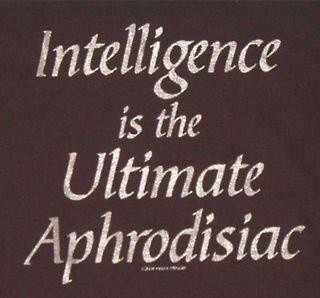


to live. to live forever.
#aesthetic#dark academia#coffee#art#books#academia#college#light academia#literature#studyblr#Poets#Poetry#Classics#Philosophy#the secret history#Donna tartt#Quotes#dark acadamia aesthetic#dark academia moodboard#dark acadamia quotes#light academia moodboard#light acadamia aesthetic#chaotic academia aesthetic#Moodboard#Pinterest#literary quotes#Reading
6K notes
·
View notes
Text







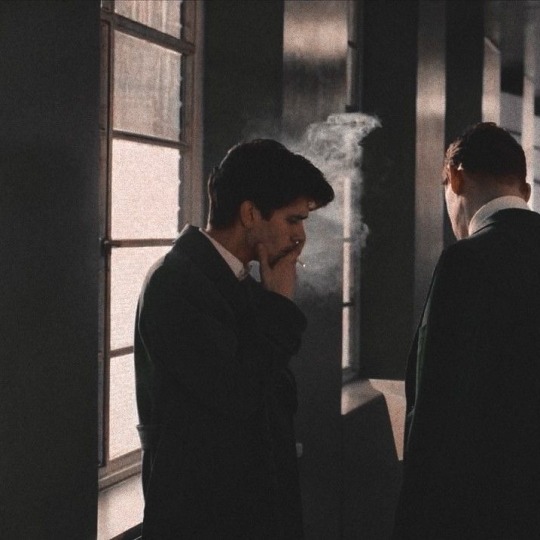
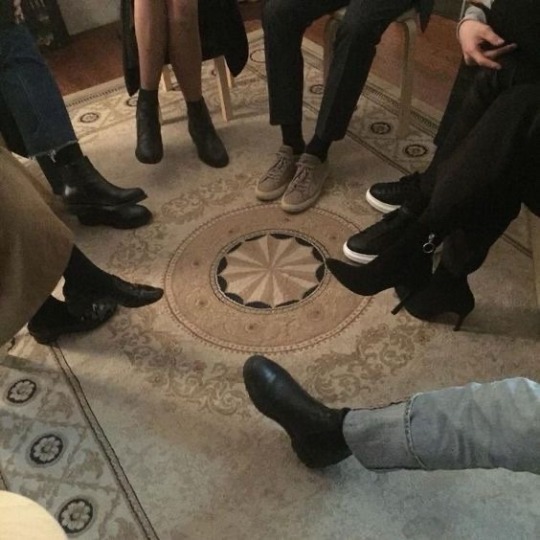
"We didn't care whether we lived or died, and that is the exact reason we lived." - Henry Winter
#the secret history#poetry#poets on tumblr#writers and poets#melancholic#soul#literature#classical literature#dark academia#poems and poetry#writers on tumblr#poems on tumblr#writer and poets#poetsandwriters#poems and quotes#poetic#poem#writeblr#writing#dark acamedia#dark acadamia aesthetic#philosophy#latin language#ancient greek#henry winter#richard papen#bunny corcoran#francis abernathy#charles macaulay#camilla macaulay
2K notes
·
View notes
Text
I think we're all being rather too blasé about the fact that most of the anglophonic population doesn't seem to believe in democracy.
I'm not using "believe in" as a synonym for "endorse", to be clear.
I mean the general sentiment is that the nominally democratic institutions of our societies do not represent the will of anyone but a small, ideologically captured elite who do not share our interests, and who do not respect the values important to us.
Democracy has been elevated to a near-sacred status. It is preached in th schools, and the voting booths, and the civic offices, and in the courts, and in the town halls, and in the hallowed halls of legislatures.
It is the value upon which our system of rule justifies and legitimises itself.
In some sense, it replaced the divine right of kings. That failed when people ceased to believe in God.
What happens to our modern civilisation when we no longer believe in democracy?
Neitzche saw the downfall of the old order in Apostasy.
A new Apostasy is upon us. An Apostasy fuelled by increasing evidence that the god of the public will is illusion, and that the heavenly throne of electoralism is empty.
We are carried forward by momentum, not fuel.
The world as it has been suffered a bevy of wounds, and soon it will bleed to death. I know not what will be born from the carrion of Democracy, but I think we are all being unreasonably calm about it.
914 notes
·
View notes
Text
One of the recurring philosophical questions is:
"Does a falling tree in the forest make a sound when there is no one to hear?"
Which says something about the nature of philosophers, because there is always someone in a forest. It may only be a badger, wondering what that cracking noise was, or a squirrel a bit puzzled by all the scenery going upwards, but someone. At the very least, if it was deep enough in the forest, millions of small gods would have heard it.
Things just happen, one after another. They don't care who knows. But history...ah, history is different. History has to be observed. Otherwise it's not history. It's just...well, things happening one after another.
Terry Pratchett, Small Gods
#history monks#small gods#discworld#terry pratchett#history#causality#events#meaning#philosophy#philosophers#observation#reality#perception#knowledge#squirrels#badgers#the nature of philosophers#things just happen#if a tree falls in a forest
1K notes
·
View notes
Text

Angela Davis December 1971, by Sal Veder.
#angela davis#1970s#black power#politics#black tumblr#academia#black history#20th century#70s#activism#feminism#community#retro#marxism#anarchy#b&w#smoking#women#civil rights#philosophy#📚 🚬
785 notes
·
View notes
Text
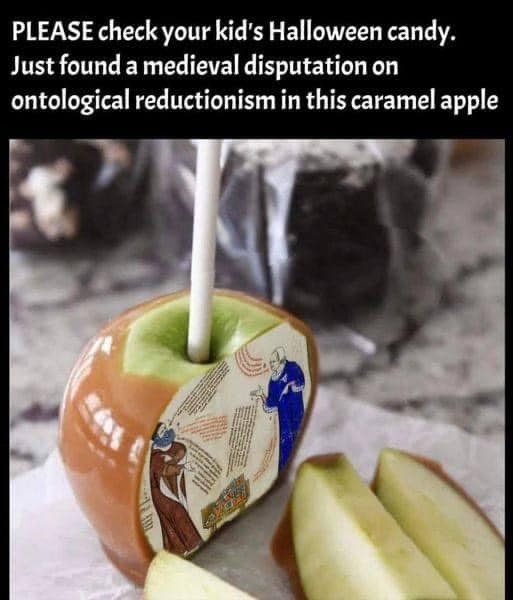
3K notes
·
View notes
Text
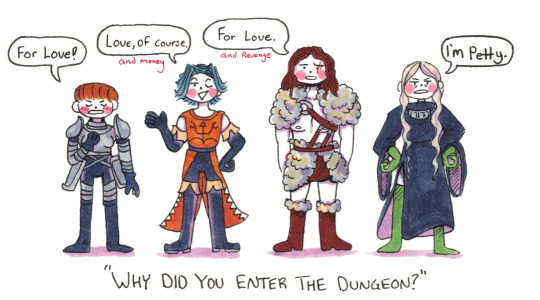
Welcome to the Dungeons of Fear and Hunger.
#Fear and Hunger#D'arce Cataliss#Cahara#Ragnvaldr#Enki Ankarian#Unlike Dungeon Meshi - I cannot in good faith recommend this game to a broad audience.#My background with F&H goes as follows: I am hanging out with a friend. He says “hey try this game I've been playing.” I say “Okay!”#I have never heard of this game. I pick the mercenary. I go through 5 min of character history and background. I am mauled to death by dogs#It took me 4 resets to even get in the dungeon. But I finally get there. I am caught by a guard. He cuts off all but one of my limbs#I am forced to crawl around in a blood and corpse pit until the game tells me 'give up idiot'.#I reset. I am mauled by dogs again. I realize this is not for me but I am intrigued enough to go home and watch some playthroughs#And WOW what an interesting game it is! I really do appreciate games that blend their design philosophy with the theme it wants to set#This is a game about fear and hunger. And persevering. And penis (my god is there a lot of penis)#I recommend this to people who like extremely challenging games and can handle the many *content warnings* within this series#If the idea of Bloodborne/eldenring and undertale having a little RPG maker baby sounds appealing to you - give it a shot#It's made by ONE GUY and it's a great horror game. I am just really bad at it.#My friends just enjoy putting me in situations where I scream and yell. We don't talk about the corn mazes. Or the other horror game nights#Apparently I'm funny when I'm Scared!#As people who follow me on twitter might know; I am deep in the pits of this series right now. I will be back with more art.
1K notes
·
View notes
Text




“You must be ready to burn yourself in your own flame; how could you rise anew if you have not first become ashes?”
-Friedrich Nietzsche, Thus Spoke Zarathustra
#friedrich nietzsche#nietzche#frederick nietzsche#nietzschequotes#nietzshe#thus spoke zarathustra#the secret history#the secret history aesthetic#tsh#tsh donna tartt#academic#academia aesthetic#academia#academics#chaotic academia#chaotic academic aesthetic#dark acadamia aesthetic#dark acamedia#romantic academia#dark academia#light academia#philosopher#philosophy#philosophy quotes#read#classic academia#aesthetic#literature#uni#book
424 notes
·
View notes
Text

Made a thing. Come on. You know you want to play. Though be warned, it may be more difficult than it looks!
#uquiz link#rousseau#frev adjacent#history shitposting#philosophy memes#quiz#history memes#1700s#age of enlightenment#jean jacques rousseau#tw: jj#uquiz quiz#uquizzes#frev#frev community
418 notes
·
View notes
Text
Taylor Swift is a Female Rage icon? Get a Grip.
I’ve just received word that Taylor Swift is calling her show “Female Rage: The Musical.” Here is my very much pissed off response to that nonsense:
The phrase, Female Rage has an intimately rich history:
Some of the first accounts of female rage dates to the Italian renaissance. To be clear, women in those days were not allowed to become painters- the arts were seen as the domain of men. They did not believe that women have rich inner lives capable of delivering the type of artistic innovation with which renaissance men were obsessed.
However, rebels abounded, through the might of their fucking rage. Several women created some of the most compellingly emotional paintings I’ve ever fucking seen. They did it without permission, without financial support, and often under the threat of punishment. They did it as a protest. In paintings like “Timoclea Killing Her Rapist” by Elisabetta Sirani (1659), and another by Artemisia Gentileschi “Slaying of Holofernes” (1612) as it depicts the bravery of Judith as she slayed a traveling warlord out to rape Judith and enslave her city. The painting often is referred to as a way Artemisia was envisioning herself as slaying her rapist. These paintings were used against these women as proof that they were unfeminine- and far too angry. Both these women suffered immensely for their audacity to call attention to the violation men perpetrated on them. Female Rage bleeds off these paintings- bleeds right through to the bone-deep acknowledgement of the injustice women faced being barred from the arts and having their humanity violated in such a sick way. Both women were hated- and considered far too angry.
In philosophy, also as early as the 15th century, an example of female rage is a philosophical text, often hailed as one of the first feminists works in the western world, written by Christine de Pizan titled The City of Ladies (1405). She wrote in protest on the state of women- writing that “men who have slandered the opposite sex out of envy have usually know women who were cleverer and more virtuous than they are” (“The City of Ladies”). People mocked her all her life- but she stood fast to her convictions. She was widowed at a young age with children to feed and the men wouldn’t let women have jobs! She wrote this book and sold it so that she could feed her family- and to protest the treatment of women as lesser than men. Her work was called aggressive and unkempt- they said she was far too angry.
In the 18th century, a young Mary Wollstonecraft wrote, A Vindication of the Right of Women ( 1792) upon learning that the civil rights won in the French Revolution did not extend to women! She wrote in protest of the unjust ways other philosophers (like Rousseau) spoke about the state of women- as if they were lesser. She wrote to advocate for women’s right to education, which they did not yet have the right to! She wrote to advocate for the advancement of women’s ability to have their own property and their own lives! The reception of this text, by the general public, lead to a campaign against Wollstonecraft- calling her “aggressive” and far too angry.
Moving into modernity, the 1960’s, and into literary examples, Maya Angelou publishes I know why the caged Bird Sings (1969) in which she discusses the fraught youth of a girl unprotected in the world. It beautifully, and heart-wrenchingly, described growing up in the American South during the 1930’s as it subjected her to the intersection of racism and sexism. The story is an autobiographical account of her own childhood, which explains how patriarchal social standards nearly destroyed her life. Upon the reception of her book, men mostly called it “overly emotional” and far too angry. Maya Angelou persisted. She did not back down from the honesty with which she shared her life- the raw, painful truth. With Literature, she regained a voice in the world.
Interwoven into each of the examples I have pulled out here, is the underlying rage of women who want to be seen as human beings, with souls, dreams and hopes, yet are not seen as full members of society at the behest of men. They take all that rage, building up in their souls, and shift it to create something beautiful: positive change. Each of these cases, I have outlined above, made remarkable strides for the women as a whole- we still feel the impact of their work today. They were so god-damn passionate, so full of righteous anger, it burst out into heart-stopping, culture-shifting art. Feminine rage is therefore grounded in experiences of injustice and abuse- yet marked too by its ability to advocate for women's rights. It cannot be historically transmogrified away from these issues- though Taylor Swift is doing her best to assert female rage as pitifully dull, full of self-deprecation, and sadness over simply being single or losing money. She trivializes the seriousness with which women have pled their cases of real, painful injustice and suffering to the masses time and time again. The examples above deal with subjects of rape, governmental tyranny, and issues of patriarchally inspired social conditioning to accept women as less human than men. It is a deadly serious topic, one in which women have raised their goddamn voices for centuries to decry- and say instead, “I am human, I matter, and men have no right to violate my mind, body, or soul.”
The depictions of female rage over the last few centuries, crossing through many cultures, is an array of outright anger, fearsome rage, and into utter despair. The one unyielding, solid underpinning, however, is that the texts are depicting the complete agency of the women in question. The one uniting aspect of female rage is that it must be a reaction to injustice; instead of how male depictions of female rage function, (think Ophelia), the women are the agents of their art with female made- female rage. They push forth the meaning through their own will- not as subjects of male desires or abuses, but as their own selves. That is what makes the phrase so empowering. They are showing their souls as a form of protest to the men who treat women like we have no soul to speak of.
Taylor Swift’s so-called female rage is a farce in comparison. Let’s look at an example: “Mad Woman” (2020). I pull this example, and not something from her TTPD set, because this is one of the earliest examples of her using the phrase female rage to describe her dumb music. (Taylor Swift talking about "mad woman" | folklore : the long pond studio sessions (youtube.com)
The lyrics from “Mad Woman” read “Every time you call me crazy, I get more crazy/... And when you say I seem angry, I get more angry”
How exactly is agreeing with someone that you are “crazy” a type of female rage in which she’s protesting the patriarchy. The patriarchy has a long history of calling women “insane” if they do not behave according to the will of men. So, how is her agreeing with the people calling her crazy- at all subversive in the way that artworks, typically associated with concept of female rage, are subversive. What is she protesting? NOTHING.
Then later, she agrees, again, that she's “angry.” The issue I draw here is that she’s not actually explicating anything within the music itself that she’s angry about- she just keeps saying she's angry over and over, thus the line falls flat. The only thing this anger connects to is the idea of someone calling her angry- which then makes her agree that she is... angry. So, despite it being convoluted, it’s also just not actually making any kind of identifiable point about society or the patriarchy- so again, I beg, what on Earth makes this count as Female Rage?
In essence, she is doing the opposite of what the examples above showcase. In letting an outside, presumably male, figure tell Taylor Swift what she is feeling, and her explicit acceptance of feeling “crazy” and “angry,” she is ultimately corroborating the patriarchy not protesting it. Her center of agency comes from assignment of feelings outside of herself and her intrinsic agreement with that assignment; whereas female rage is truly contingent on the internal state, required as within our own selves, of female agency. As I stated above, the women making female rage art must have an explicit agency throughout the work. Taylor Swift’s song simply does not measure up to this standard.
Her finishing remarks corroborates the fact that she's agreeing with this patriarchal standard of a "mad" or crazy woman:
"No one likes a mad woman/ You made her like that"
Again, this line outsources agency through saying "you made her like that" thus removing any possibility of this song being legitimate female rage. There is simply no agency assigned to the woman in the song- nor does the song ever explicitly comment on a social issue or protestation of some grievous injury to women's personhood.
She honestly not even being clever- she's just rhyming the word “crazy” with “crazy.” Then later rhyming “angry” with “angry.” Groundbreaking stuff here.
Perhaps Taylor Swift is angry, in “Mad Woman,” but it is not the same type of rage established in the philosophical concept of female rage of which art historians, philosophers, and literary critics speak. Instead, it is the rage of a businesswoman that got a bad deal- but it is not Female Rage as scholars would identify it. In “Mad Woman” I fear her anger is shallow, and only centered on material loss- through damaging business deals or bad business partners. She is not, however, discussing what someone like Christine de Pizan was discussing by making a case for the concept that woman also have souls like men do. In her book, she had to argue that women have souls, because men were unconvinced of that. Do you see the difference? I am saying that Swift’s concerns are purely monetary and material, whereas true examples of female rage center on injustice done against their personhood- as affront to human rights. Clearly, both things can make someone mad- but I’d argue the violation of human rights is more serious- thus more deserving of the title “Female Rage.”
Simply put, Taylor Swift is not talking about anything serious, or specific, enough to launch her into the halls of fame for "Female Rage" art. She's mad, sure, but she's mad the way a CEO gets mad about losing a million dollars. She's not mad about women's position in society- or even just in the music industry.
She does this a lot. The album of “Reputation” was described as female rage. Songs in “Folklore” were described as female rage. Now, she’s using the term to describe TTPD, which is the most self-centered, ego-driven music I’ve heard in a long time.
Comparing the injustice, and complete subjugation, of women’s lives- to being dumped by a man or getting a bad deal- wherein she is still one of the most powerful women of the planet- is not only laughable, but offensive.
#anti taylor swift#taylor swift critical#ex swiftie#mad woman#folklore#maya angelou#christine de pizan#artemisia gentileschi#mary wollstonecraft#Elisabetta Sirani#art history#books and literature#feminist#feminism#female rage#taylor swift#activism#toxic swifties#toxic taylor swift#philosophy#fuck Rousseau#I'm a professional Taylor Swift Critic
517 notes
·
View notes
Text
“Your life does not get better by chance, it gets better by change.”
— Jim Rohn




#study aesthetic#study blog#study inspiration#study motivation#studyblr#studying#studyspo#law of assumption#law of attraction#light academia#dark academia#art academia#chaotic academic aesthetic#chaotic academia#universidad#university#study inspo#work in progress#work hard#philosophy#history#lawblr#writeblr#writers on tumblr#writing#clean girl#girlblogging#get motivated#gothic academia#motivating quotes
303 notes
·
View notes
Text


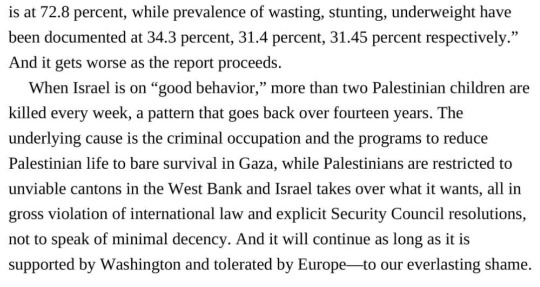
— On Palestine: Noam Chomsky, Ilan Pappé (2015)
#free gaza#gaza#free palestine#On Palestine#Noam Chomsky#Frank Barat#Palestine#Israel#Palestinian rights#free Palestine#free Gaza#politics#atypicalreads#nonfiction#zionism#history#philosophy#political#nsnv#unrwa#statistics#breaking international law
1K notes
·
View notes
Text
Odysseus is stronger than me bc the moment a cyclops killed my best friend I would've dropped his "greet the world with opens arms" philosophy real quick
#like that philosophy is literally the thing that got my bestie killed#stupid bestie with his stupid philosophy#this is why history thinks we were just friends polites#epic the musical#greek mythology#epic the ocean saga#epic the cyclops saga#epic the circe saga#epic the troy saga#odysseus#polites#Odysseus and polites
1K notes
·
View notes
Text

Some Lugones posting because she's pretty underrated 🧡
#philosophy#sociology#queer#history#indigenous#poc#feminism#feminist#memes#lgbtq#bi#gay#trans#transgender#nonbinary#genderfluid#politics#progressive
340 notes
·
View notes
Text
Is it just me, or is the Christian reinterpretation of the Covenant really unfair to Jews? Like, the idea that through faith in Christ, the Covenant is fulfilled is kind of demeaning to the suffering of all the people in the Tanakh. If God wanted to establish a Covenant with humanity, granted that as part of a special relationship to the Jews, wherein they suffered incredible oppression, exile, war, and terror... and then he just turns around to suddenly remove the expectation of upholding the law as long as you have faith in this human sacrifice (who by the way is also him, even though he's only supposed to be one god), that would be incredibly demeaning to Jewish people. Like they just suffered so much to try and uphold their end of the deal! And now everybody gets access for just having belief?
And then Christianity fundamentally references the suffering of the Jewish people as a pedagogical device, ultimately to serve Christians? The attitude that the events of the Old Testament are to demonstrate and allude to the coming of Christ is pretty common. So a Christian legitimately reads about the suffering of Jewish people and gets the impression that it was on their behalf. If we think about that, no wonder so many people are willing to use Jewish suffering as a rhetorical device, and no wonder people have such a fascination with Jewish suffering only after the tragic events have unfolded - it's baked into the Christian perspective on the history of Jewish people. Christianity suggests that Jewish people exist on behalf of Christians. I really think that this is part of why Antisemitism behaves so unusually compared to other prejudices.
271 notes
·
View notes
